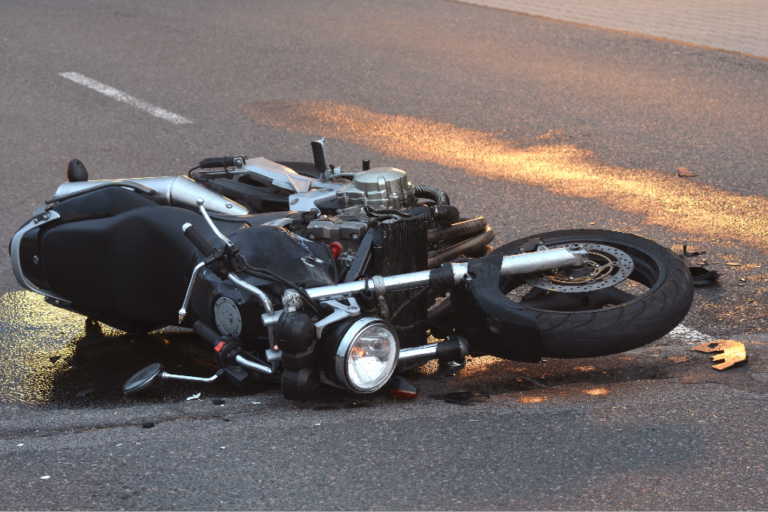
Six Tips for Riding a Motorcycle in Colder Weather
Many people would not even consider riding a motorcycle in colder weather. On a bike, you face the most severe weather elements, including the cold and wet. Cold weather requires more preparation, more planning, and a keen awareness of current road and weather conditions to avoid accidents. You may benefit from the six tips for riding a motorcycle in colder weather that are listed below.
Motorcycle riders do not have the luxury of seat belts, crumple zone bumpers, or lane assistance technology. Bikers are exposed to many dangers, including being thrown off the bike into other vehicles, signs, or objects.
Risks to Riders in Colder Weather
Cold weather motorcycle riding requires you to conduct a risk versus benefit assessment before deciding to ride. Some of the riding dangers you will need to manage include:
Loss of Heat to the Body
Wet rain, wind chill, and lower temperatures can quickly soak into your skin and cause your body temperature to fall. When it is cold, your body constricts the blood vessels, which can harm your head, fingers, and toes. These body parts rely on blood flow for warmth.
Slippery Surfaces
Brakes do not work well when the pavement is cold, wet, and slick. A cold tire does not have the same amount of traction as a warm tire. Poor traction combined with wet or icy roads is deadly. When your traction is decreased, your risks of slipping, sliding, and losing control are increased.
Mechanical Failure
A leading cause of breakdowns for motorbikes in colder weather is a flat battery.
Some motorcycle accidents are due to rider error; however, many motorcycle accidents can occur due to faulty components or improper maintenance or repair. If someone else’s negligent behavior caused your motorcycle accident, obtaining fair compensation is easier when you work with an experienced motorcycle injury attorney.
Six Tips for Riding a Motorcycle in Colder Weather
The following six tips will help you prep your bike, your riding, and yourself to stay comfortable and safe while accruing more ride miles during colder weather:
Check Your Bike before You Ride
Properly maintaining a motorcycle will help you avoid many problems while you are out on the road, regardless of the weather conditions. You should check the following things before you hit the road in colder weather:
- Tires: See that tires have the appropriate amount of inflation before each trip. Never ride if your tires are low on tread.
- Fluids: Flush and refill your oil with one that has a cold weather temperature rating. The oil filter should be changed when changing the oil. Additionally, you will want to check and refill the antifreeze to protect your bike’s engine from freezing temperatures.
- Chain: Make sure the chain is adequately lubricated and does not have worn sprockets or loose tension.
- Battery and Electrical Components: Inspect and clean your bike’s battery, ensuring that the terminals are free from dirt and residue. Check the battery charge with a voltage meter. If the battery is showing signs of wear, replace it.
- Lights: Clean your headlights so you can see the road ahead clearly in the dark.
Reduce Your Speed
Reduced speed allows you more time to respond to road and traffic hazards. At a reduced speed, your stopping distance is also reduced, especially when traction is a more significant issue. Gently back off the accelerator when you need to slow down, rather than using the brakes, to help maintain control of your bike.
Increase Your Following Distance
The standard rule for following distance is two seconds. In cold weather, consider increasing this distance. Your reaction times might be slower in the cold. Other motorists could react more suddenly or erratically when experiencing cold weather traction or traffic issues.
Be Alert to Road Conditions
Surface hazards increase dramatically in cold weather. Morning dew or frost, while visible, is still very slick. Also, rain is more likely to occur in colder weather.
Enhance Your Visibility
The last thing car and truck drivers expect to see in cold weather is someone on a motorcycle. Wearing black or dark riding gear makes you blend into the landscape. Wear brightly colored and reflective gear to make yourself more visible to other road users.
Use Your Common Sense
If it is cold outside, the cold will be magnified when you are riding your motorcycle. Fifty-five degrees can feel like forty-five degrees very quickly. You should dress appropriately. Bundle up by piling on layers. Cover yourself in pants and a shirt that will keep you warm and draw away moisture from sweat. Neck warmers and gloves are essential, as are boots that keep your feet toasty and warm.
If you choose to ride your bike during colder weather, be sure to take the necessary precautions to keep warm, maintain your bike, and stay in control.
Discuss Your Motorcycle Injury with an Orlando Personal Injury Lawyer at Fighter Law
A motorcycle accident can be costly and cause significant bodily harm. At Fighter Law, we evaluate all parties that could be held accountable for damages and injuries. We may be able to help you receive the maximum compensation you are owed.
Have you been injured and need advice about your motorcycle accident claim? The personal injury lawyers at Fighter Law listen carefully to your needs, and they will fight to obtain the best outcome for your case. To schedule a free consultation, call us at (407) 344-4837 or contact us online.
Share:
free case evaluation
Fill out the form below for an free evaluation of your case.
Categories
- Birth Injury
- Boating Accidents
- Car Accidents
- Civil Rights
- Criminal Defense
- Cyberstalking
- Divorce
- Dog Bite Injury
- Domestic Abuse Charges
- Domestic Violence
- Drug Charges
- DUI Charges
- Family Law
- Felonies
- Fighter Law Firm
- Firearms
- Firm News
- Guardianship
- Injunction Removal
- Injunctions
- Marketing
- Personal Injury
- Repeat Violence Injunction
- Restraining Order
- Seal and Expunge
- Self Defense
- Sex Crimes
- Slip and Fall
- Stalking Injunction
- Theft and Robbery
- Theme Park Trespasses
- Traffic tickets
- Uncategorized
- Wills and Trusts

